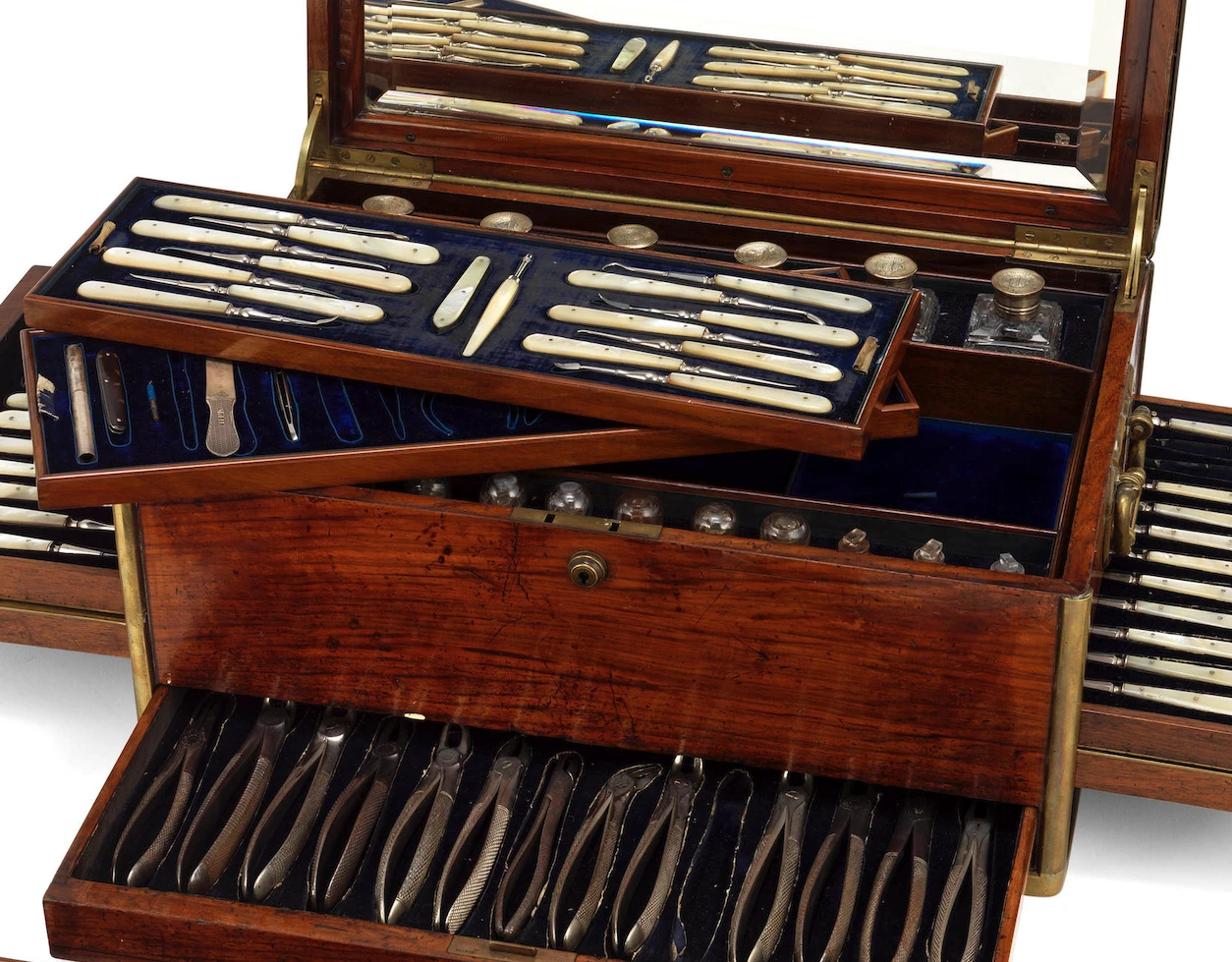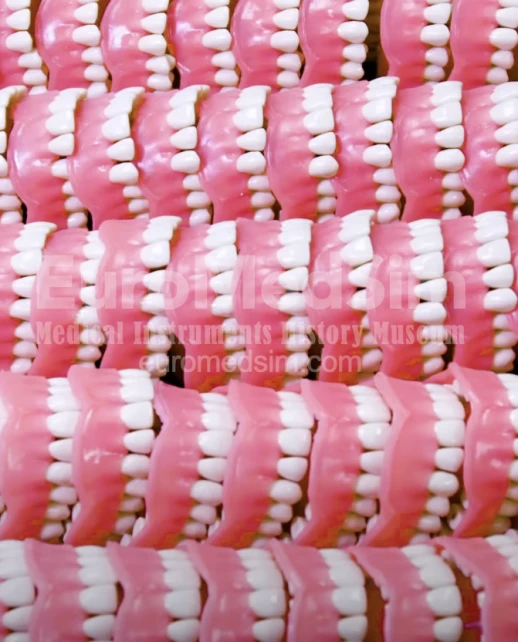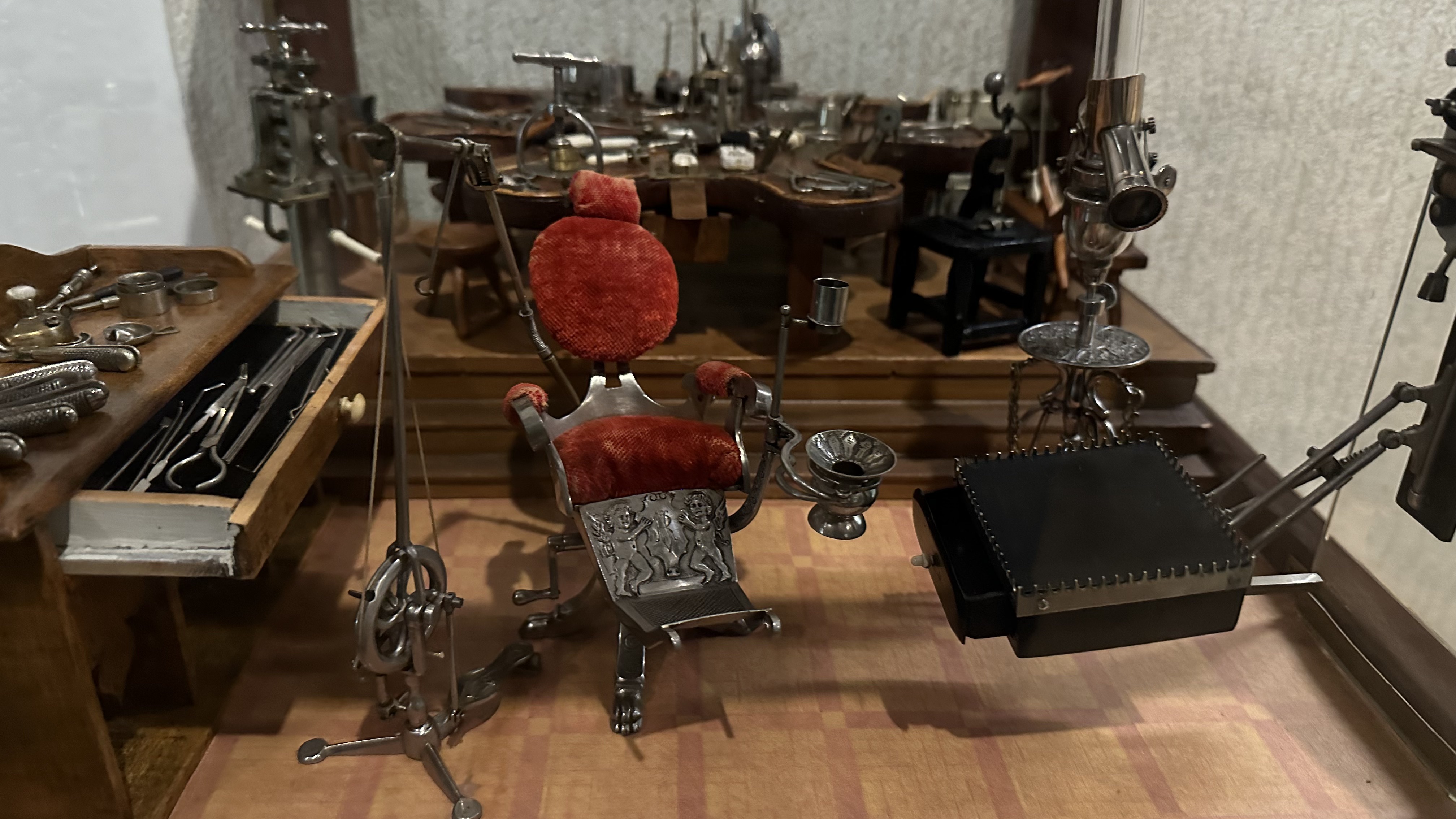Search results3 results
COLLECTION

England, 19 C. 2 half
A fine presentation Dentistry and Surgical Chest, English, late 19th century is contained in the walnut brass-bound case, with an engraved brass plaque on the lid with a leopard coat of arms inscribed LABOR OMNIA VINCIT, C.I.H. ("Work conquers all"), with four Bramah locks and associated key for the lid and the front and side compartments. The compartments (three with beveled mirrors), fitted with blue velvet covering lodgements for instruments, contain cut-glass bottles with glass stopper and hinged metal cap bearing the same motto, a Claudius Ash & Sons booklet with dental tin foil leaves, dental and surgical instruments with mother-of-pearl (nacre) or tortoiseshell handles, some with decorative carved mother-of-pearl handles. The instruments are marked: SAVIGNY & CO, LONDON; MAW SON & THOMPSON, SWS, and SMALE. Property from a private collection, acquired in the mid-20th century. By repute commissioned and used by a dental surgeon aboard an early Transatlantic luxury liner.
FIRM

USA, New York
Columbia Dentoform, established in 1917 by Ben Spitzer, a Columbia University Engineering School graduate, began as the Columbia Dental and X-Ray Company in Manhattan, New York. Initially, the company provided x-ray equipment for dental offices and sold articulators and attachments to dental laboratories. Ben Spritzer In 1917, it introduced metal typodonts—his first phantoms for dental teaching and practice. Today, as part of the DentalEZ family of brands, Columbia Dentoform continues to develop and provide high-quality simulation products, maintaining its commitment to improving the instructional process and learning experience for dental students globally.
MUSEUM

Hungary, Budapest
The Hungarian people are proud of Ignaz Philipp Semmelweis (1818–1865), born in Pest to a catholic German family, the discoverer of the cause of childbed fever – fatal infectious complications in women in labor, and introduced effective measures of it's prevention in 1846. In his honour, the building where he was born in 1818 now houses a museum of the history of medicine bearing his name, which tells not only about Dr. Semmelweis, but also provides a multifaceted illustration of the main milestones in the development of European and world medicine. The remarkable permanent exhibition is complemented by regularly updated temporary exhibitions.